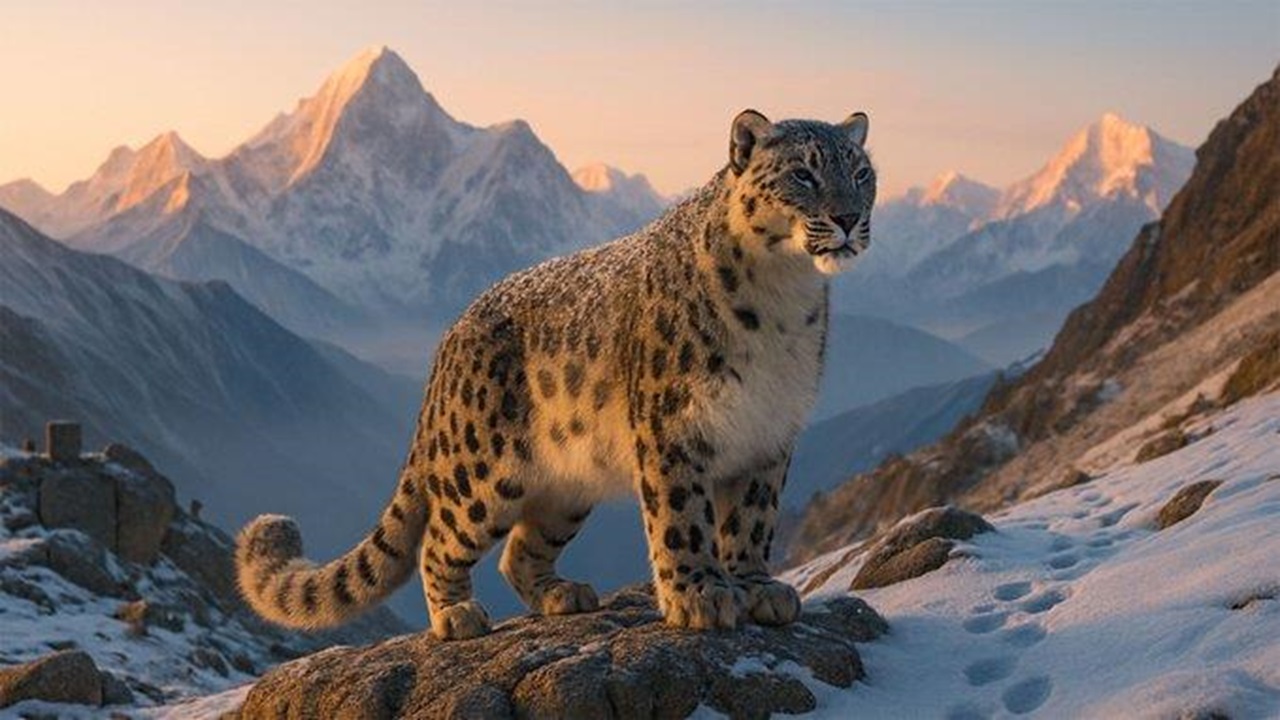Snow Leopard Conservation: Balancing Ecology and Development in Fragile Landscapes
Snow Leopard – The Ghost of the Mountains
Scientific Classification
-
Common Name: Snow Leopard
-
Scientific Name: Panthera uncia
-
Family: Felidae (Cat Family)
Introduction
The snow leopard is a medium-sized big cat known for its elusive nature and breathtaking beauty. It is often called the "ghost of the mountains" because of how rarely it is seen in the wild. Adapted to live in some of the harshest and most rugged terrains on Earth, the snow leopard is a symbol of the high mountains of Asia.
Habitat and Distribution
Snow leopards inhabit the mountainous regions of Central and South Asia, typically preferring cold, arid, and rocky environments.
-
Elevation Range:
-
Winter: Around 1,800 meters (6,000 feet)
-
Summer: Up to 5,500 meters (18,000 feet)
-
-
Geographic Range:
They are found in 12 countries, including:-
China
-
India
-
Bhutan
-
Nepal
-
Pakistan
-
Russia
-
Mongolia
-
(Also found in Afghanistan, Kyrgyzstan, Kazakhstan, Tajikistan, and Uzbekistan)
-
-
In India:
Snow leopards are found in the high-altitude regions of:-
Jammu & Kashmir
-
Himachal Pradesh
-
Uttarakhand
-
Sikkim
-
Arunachal Pradesh
-
Physical Features and Adaptations
Snow leopards are well adapted to survive in cold, mountainous environments. Their physical features help them to navigate rugged terrain and endure freezing temperatures.
-
Fur:
-
Color: Pale grey with dark rosettes and spots – ideal for camouflage among rocks and snow.
-
Undercoat: Thick and insulating to retain body heat.
-
Outer Fur: Up to 2 cm long, protects from cold wind and snow.
-
-
Body Size:
-
Length: Up to 7 feet (2.1 meters) from head to tail.
-
The tail alone makes up nearly half of this length.
-
-
Height at Shoulder: About 2 feet (0.6 meters)
-
Weight: Ranges from 60 to 120 pounds (27 to 54 kilograms)
-
Males are generally larger than females.
-
-
-
Tail:
-
Long and thick, used for balance while climbing and warmth when wrapped around the body during sleep.
-
-
Paws:
-
Large and fur-covered, acting like natural snowshoes to prevent sinking into snow.
-
-
Eyes and Hearing:
-
Excellent vision and hearing for hunting in low-light conditions.
-
Behavior and Lifestyle
-
Solitary Animals:
Snow leopards are mostly solitary, coming together only during the mating season or when a mother is raising her cubs. -
Territorial:
They maintain large territories, using scent markings to communicate. -
Diet:
Carnivorous, feeding on animals such as:-
Blue sheep (bharal)
-
Ibex
-
Marmots
-
Hares
-
Occasionally, livestock
-
-
Hunting Style:
They are ambush predators, using stealth and the element of surprise to catch their prey.
Conservation Status
Despite their wide range, snow leopards are rare and endangered, facing several threats from human activities.
-
Estimated Wild Population:
Between 3,920 and 6,390 individuals remaining in the wild. -
Threats:
-
Habitat loss due to human encroachment and development
-
Poaching for their fur and bones
-
Conflict with herders when snow leopards prey on livestock
-
Climate change, which affects the fragile mountain ecosystems
-
-
Protection Status:
-
IUCN Red List: Vulnerable
-
CITES: Listed in Appendix I (prohibits international trade)
-
India’s Wildlife (Protection) Act, 1972: Schedule I (offers the highest level of protection)
-
Conservation Efforts
Governments, local communities, and international organizations are working together to protect snow leopards by:
-
Establishing protected areas and reserves
-
Promoting eco-tourism and awareness
-
Supporting community-based conservation programs
-
Implementing anti-poaching laws and conflict mitigation
Conclusion
The snow leopard is not just a beautiful and mysterious predator; it is also a vital part of the mountain ecosystem. Protecting snow leopards means protecting entire mountain habitats and the diverse life forms that depend on them. Through sustained conservation efforts, there is hope that the "ghost of the mountains" will continue to roam the high peaks of Asia for generations to come




Comments (0)